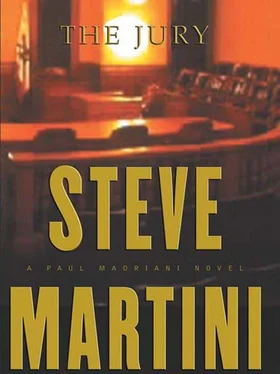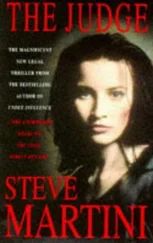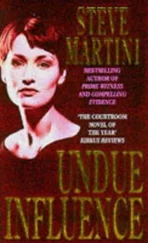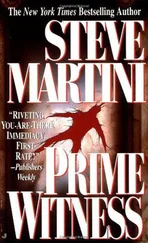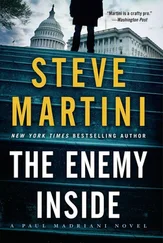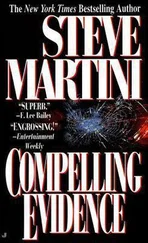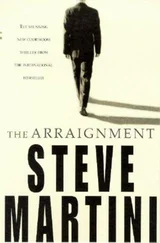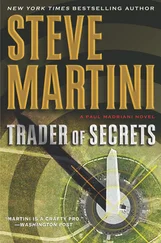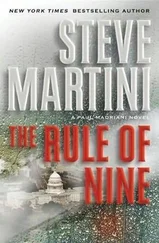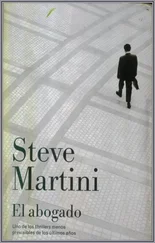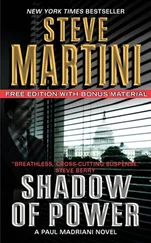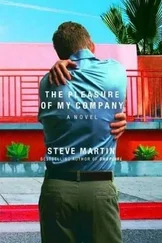Steve Martini - The Jury
Здесь есть возможность читать онлайн «Steve Martini - The Jury» весь текст электронной книги совершенно бесплатно (целиком полную версию без сокращений). В некоторых случаях можно слушать аудио, скачать через торрент в формате fb2 и присутствует краткое содержание. Год выпуска: 0101, Издательство: Penguin Group US, Жанр: Триллер, на английском языке. Описание произведения, (предисловие) а так же отзывы посетителей доступны на портале библиотеки ЛибКат.
- Название:The Jury
- Автор:
- Издательство:Penguin Group US
- Жанр:
- Год:0101
- ISBN:нет данных
- Рейтинг книги:3 / 5. Голосов: 1
-
Избранное:Добавить в избранное
- Отзывы:
-
Ваша оценка:
- 60
- 1
- 2
- 3
- 4
- 5
The Jury: краткое содержание, описание и аннотация
Предлагаем к чтению аннотацию, описание, краткое содержание или предисловие (зависит от того, что написал сам автор книги «The Jury»). Если вы не нашли необходимую информацию о книге — напишите в комментариях, мы постараемся отыскать её.
The Jury — читать онлайн бесплатно полную книгу (весь текст) целиком
Ниже представлен текст книги, разбитый по страницам. Система сохранения места последней прочитанной страницы, позволяет с удобством читать онлайн бесплатно книгу «The Jury», без необходимости каждый раз заново искать на чём Вы остановились. Поставьте закладку, и сможете в любой момент перейти на страницу, на которой закончили чтение.
Интервал:
Закладка:
A few months before I met them, Penny had a problem. The Boyds were at an amusement park. The kids were watching the orcas do their thing, when a wave overshot the side and splashed the front rows. Children went screaming and giggling up into the stands looking for cover, all except Penny, who lay on the concrete floor in convulsions. She had suffered a seizure of some kind. Doris and Frank raced her to the hospital, where doctors conducted a series of tests and held her for observation. After no further recurrences, the doctors were at a loss. They released her, but told her parents it was possible that Penny had epilepsy. They were wrong.
Over the next few months, Penny began to show disturbing signs of withdrawal. She had always been an outgoing child with strong social skills, and quick to learn. Now she began to regress, to turn inward. She stopped playing with other children and began having difficulties with her studies. Teachers identified her as having what they termed learning disabilities. The family tried a private tutor, but the problem got worse. They took her to the family doctor, a pediatrician who had cared for all three of the Boyd children since birth. He was stumped.
Penny ended up at the university medical center for a battery of tests. A specialist finally found the answer. Penny Boyd had Huntington’s chorea, a hereditary disease that strikes the brain and central nervous system. In time, it results in loss of brain tissue, an inability to control muscles and, ultimately, death. The only positive aspect of the disease is that it rarely strikes children. Penny was the exception.
It is likely that she might never have been diagnosed, except for the fact that recent advances in genetic medicine had resulted in a diagnostic test for Huntington’s disease.
In the last year I have learned more about the genetics of Huntington’s disease than I ever wanted to know. The mutation of the gene that causes the disease resides on chromosome 4. A total absence of the gene results not in Huntington’s disease, but another deadly ailment, Wolf-Hirschhorn syndrome. This kills its victims at an even younger age.
Life is an alphabet soup made up of only four letters: A,C,G and T. You would think this could get boring. Instead, it has led to a code of life more complex than any cipher crafted by supercomputers at the National Security Agency.
The four molecules, adenine, cytosine, guanine and thymine, produce amino acids. These in turn give rise to proteins, which lead to enzymes. The enzymes carry out the necessary functions of chemistry to sustain life on the planet.
When the intricacies of chromosome 4 were finally untangled, what scientists found was that C,A,G, three of the four letters of life, were repeated in a kind of chemical poetry on the chromosome. It is the number of repetitions in that sonata that determined the fate of Penny Boyd.
If the word CAG were repeated ten times or twenty times or even thirty times, she would be fine. But spin the wheel and come up thirty-nine times or more, and Nature cleans the table in life’s bet-you lose.
It gets worse. In a kind of bizarre formula that is both precise and unforgiving, geneticists can now determine with near precision exactly when you will get the disease. We may now learn things we don’t want to know. Get fifty repetitions and at age twenty-seven you will grow unsteady on your feet, begin to lose your intellectual abilities, be confronted by uncontrollable palsy of your limbs and slowly lose your mind. In Penny’s case she has more than seventy repetitions.
Until recently, all this, who got Huntington’s disease and who escaped, had been viewed as some unfathomable mystery, an accident of fate. Now we know what causes the problem, but we can’t fix it. Perhaps ignorance is bliss.
The Boyds are now faced with the question of whether it is better to live in ignorance or to have the other children tested. So far, they have declined to run the tests.
This afternoon, I greet Penny with a smile and touch her cheek. She doesn’t recognize me. Sitting on her mother’s lap, gangly legs, her feet dragging on the carpeted floor of the living room, she puts one finger in her mouth. A string of saliva quickly forms between finger and tongue. The girl seems mesmerized by this. She now has the mental abilities of a four-year-old, her growing body belying the regression of her brain.
I have only known Doris Boyd for about a year, and in that time she has aged a decade. A manager for a temporary personnel firm, she no longer goes to work, uncertain how much time she has left with her middle daughter, or for that matter any of her children. This is now taking a toll on her marriage.
“Is Frank home?”
She shakes her head. “He comes home later every night. Can you blame him?”
I have come to pick up my daughter, Sarah, who is working on a school project with Jennifer, the Boyds’ oldest child. We talk a little, pass the time of day, avoid the obvious: the dying child in her lap.
She asks me how the case is going. For the parents of most of Sarah’s friends, what I do for a living is a novelty. The appearance of my name in the local paper on occasion in association with someone charged in a murder case has given me an unwonted notoriety. She has watched the news on TV. Doris Boyd has a personal interest in the outcome. Strangely enough, she is how I met David Crone.
“We have good days and bad days. Sort of like Penny,” I tell her. This she understands. “Ask me in a week.”
“They don’t make it look good on television,” she says.
“I’ve seen some of the coverage,” I tell her. I’ve also grown weary of seeing the same worn images in other cases, some lawyer in a crowded corridor with a microphone stuck up his nose telling the world that when the evidence comes in, his client will be exonerated, acquitted. They always use the same words. “I have every confidence.” The same tired denials broadcast to an increasingly cynical public, followed by the same shopworn analysis from media types whose idea of gathering news is to hang out on the courthouse steps with boom mikes and cameras waiting for a public confession. One day, some freaked-out lawyer will blow his fuse and tell them-“My fucking client did it. So what?”
Fortunately for us, the judge has seen fit to bar cameras from the courtroom. Even so, the trial is a growing media circus. The press has dubbed it the “Jigsaw Jane Trial,” a tag line placed on the case by the gallows humor of the coroner’s people before they identified the victim from her body parts.
The city’s leading television station, a local network affiliate, airs the same image every night, projected on a blue screen over the shoulder of their anchor: a rip-off of the fifties jacket cover from Anatomy of a Murder. This shows an anatomical stick figure with disconnected body parts with jagged cuts and splotches of blood. Give them any story and they can come up with a logo in twenty seconds.
Crone’s trial leads the six-o’clock news every night unless there is a mass killing, a nuclear meltdown or some other carnage that can be quickly packaged and labeled. It invariably opens with the same words: “And today in the Jigsaw Jane murder case of Dr. David Crone. .” Whether he realizes it or not, and regardless of the trial’s outcome, Crone will wear this scarlet letter for life. If he is convicted, he will no doubt become the “Jigsaw Jane Killer.”
“I suppose they have to do something to keep people watching,” says Doris. Her interest is more than casual. There are fewer than fifty cases of juvenile-onset Huntington’s disease in the country. Because of that, there are no clinical tests to research cures for children. I could not believe this when they first told me. We were having coffee one night, and Frank Boyd explained the problems they were having.
Читать дальшеИнтервал:
Закладка:
Похожие книги на «The Jury»
Представляем Вашему вниманию похожие книги на «The Jury» списком для выбора. Мы отобрали схожую по названию и смыслу литературу в надежде предоставить читателям больше вариантов отыскать новые, интересные, ещё непрочитанные произведения.
Обсуждение, отзывы о книге «The Jury» и просто собственные мнения читателей. Оставьте ваши комментарии, напишите, что Вы думаете о произведении, его смысле или главных героях. Укажите что конкретно понравилось, а что нет, и почему Вы так считаете.
